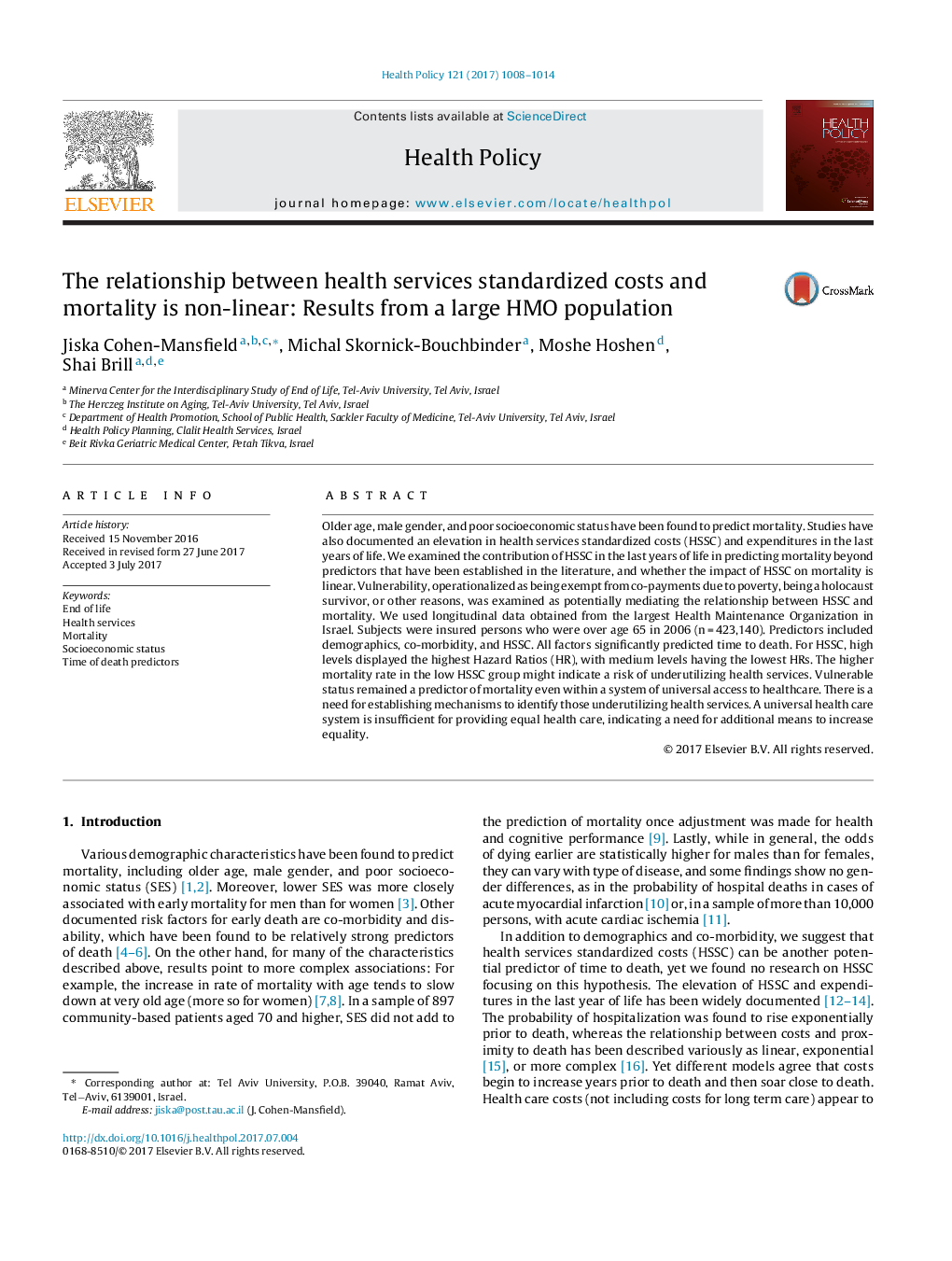| Article ID | Journal | Published Year | Pages | File Type |
|---|---|---|---|---|
| 5723381 | Health Policy | 2017 | 7 Pages |
â¢Low Health Services Standardized Costs (HSSC) poses greater mortality risk than medium HSSC.â¢Despite a universal health system, vulnerable status predicted mortality.â¢The low HSSC group may be at risk of underutilizing services.
Older age, male gender, and poor socioeconomic status have been found to predict mortality. Studies have also documented an elevation in health services standardized costs (HSSC) and expenditures in the last years of life. We examined the contribution of HSSC in the last years of life in predicting mortality beyond predictors that have been established in the literature, and whether the impact of HSSC on mortality is linear. Vulnerability, operationalized as being exempt from co-payments due to poverty, being a holocaust survivor, or other reasons, was examined as potentially mediating the relationship between HSSC and mortality. We used longitudinal data obtained from the largest Health Maintenance Organization in Israel. Subjects were insured persons who were over age 65 in 2006 (n = 423,140). Predictors included demographics, co-morbidity, and HSSC. All factors significantly predicted time to death. For HSSC, high levels displayed the highest Hazard Ratios (HR), with medium levels having the lowest HRs. The higher mortality rate in the low HSSC group might indicate a risk of underutilizing health services. Vulnerable status remained a predictor of mortality even within a system of universal access to healthcare. There is a need for establishing mechanisms to identify those underutilizing health services. A universal health care system is insufficient for providing equal health care, indicating a need for additional means to increase equality.
